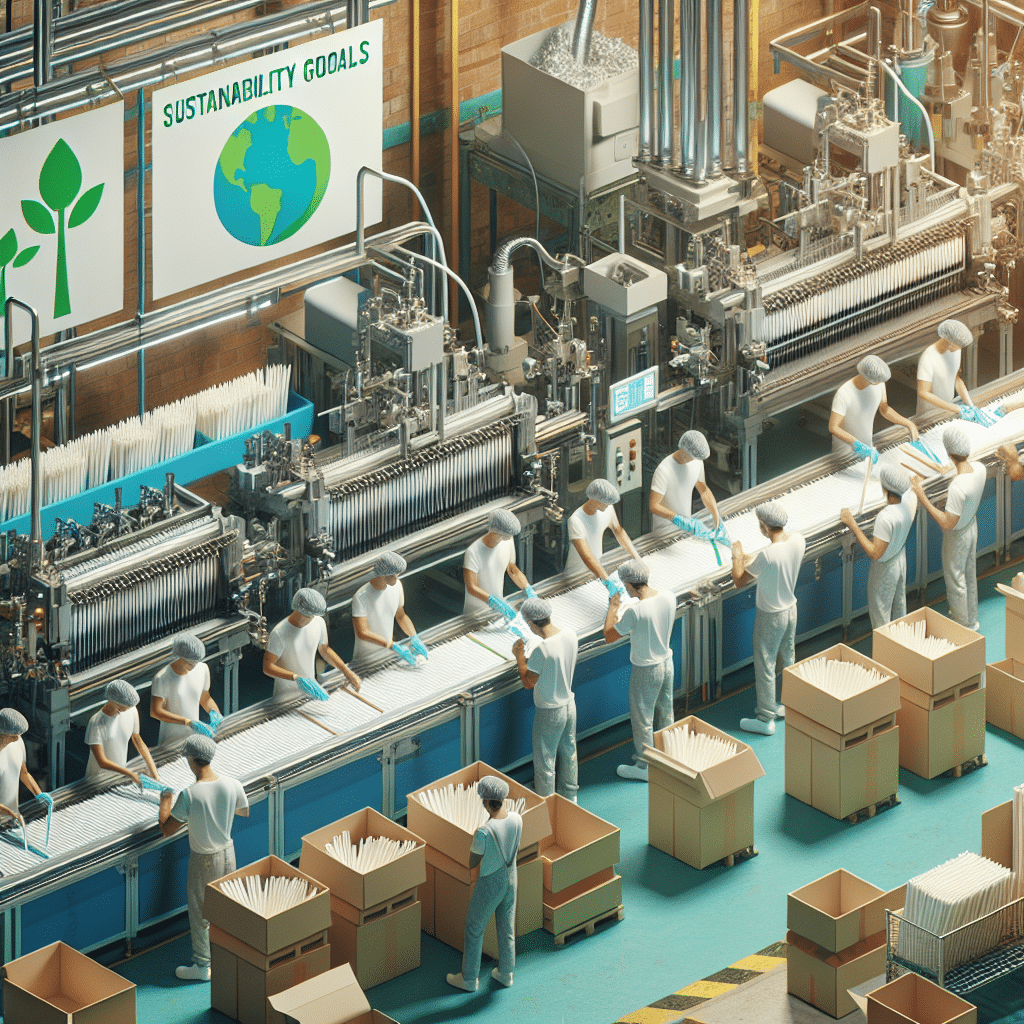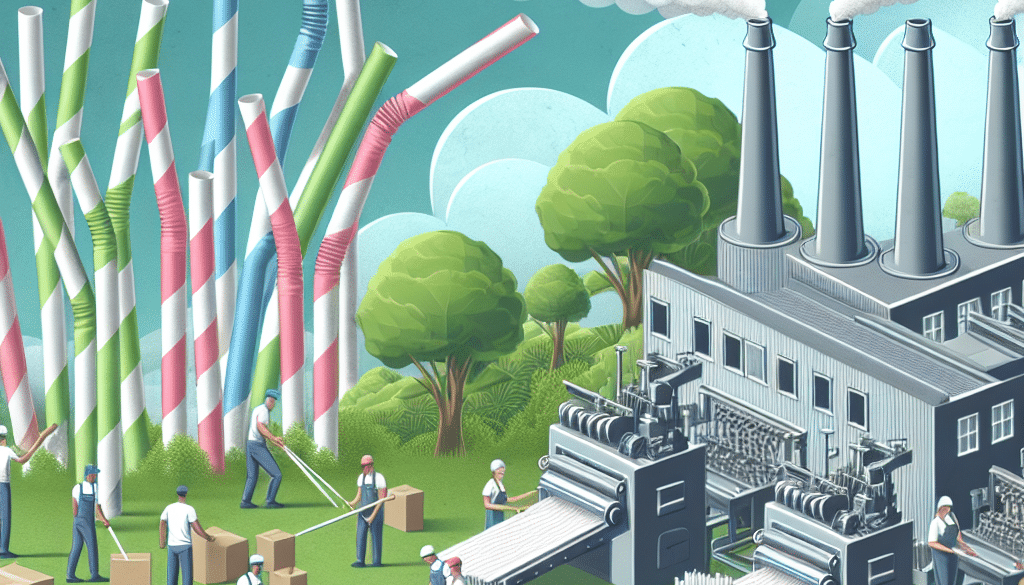Beyond the Paper Straw: Aligning Your Manufacturing and Sustainability Goals
-
Table of Contents
- Beyond the Paper Straw: Enhancing Manufacturing with Sustainable Practices
- Understanding the Sustainability Imperative in Manufacturing
- Strategies for Aligning Manufacturing with Sustainability
- Adopting Lean Manufacturing Principles
- Investing in Renewable Energy
- Implementing Circular Economy Models
- Enhancing Product Design
- Engaging in Responsible Sourcing
- Case Studies: Success Stories in Sustainable Manufacturing
- Patagonia’s Commitment to the Environment
- Interface’s Mission Zero
- Tesla’s Sustainable Energy Solutions
- Measuring the Impact of Sustainable Manufacturing
- Challenges and Opportunities
- Conclusion: The Future of Sustainable Manufacturing
- ETChem: Aligning Protein Products with Sustainability
Beyond the Paper Straw: Enhancing Manufacturing with Sustainable Practices

In recent years, the shift towards sustainability has become more than just a trend; it’s a necessary evolution in the way businesses operate. The iconic image of the paper straw has become a symbol of this movement, representing a small but significant step towards environmental responsibility. However, for manufacturing companies, the journey towards sustainability encompasses far more than just swapping out plastic straws. It involves a holistic approach that aligns manufacturing processes with sustainability goals to create a positive impact on the planet and the bottom line.
Understanding the Sustainability Imperative in Manufacturing
The manufacturing sector has traditionally been one of the largest contributors to environmental degradation, resource depletion, and pollution. As public awareness and regulatory pressures increase, manufacturers are now tasked with finding ways to reduce their ecological footprint while maintaining productivity and profitability.
- Reducing waste and emissions
- Conserving energy and water
- Utilizing renewable resources
- Creating eco-friendly products
By integrating sustainability into their core business strategy, manufacturers can not only meet regulatory requirements and consumer demands but also uncover opportunities for innovation and cost savings.
Strategies for Aligning Manufacturing with Sustainability
Transitioning to sustainable manufacturing is a complex process that requires a strategic approach. Here are some key strategies that can help manufacturers align their operations with sustainability goals:
Adopting Lean Manufacturing Principles
Lean manufacturing focuses on minimizing waste without sacrificing productivity. By streamlining processes and improving efficiency, manufacturers can reduce resource consumption and environmental impact.
Investing in Renewable Energy
Switching to renewable energy sources such as solar, wind, or hydro power can significantly reduce a manufacturer’s carbon footprint and energy costs in the long run.
Implementing Circular Economy Models
A circular economy aims to keep products, materials, and resources in use for as long as possible. By designing products for durability, repairability, and recyclability, manufacturers can minimize waste and create a closed-loop system.
Enhancing Product Design
Eco-design principles can be applied to create products that are more sustainable throughout their lifecycle. This includes using recyclable materials, reducing packaging, and improving energy efficiency.
Engaging in Responsible Sourcing
Ensuring that raw materials are sourced ethically and sustainably is crucial. This involves working with suppliers who adhere to environmental standards and fair labor practices.
Case Studies: Success Stories in Sustainable Manufacturing
Several companies have successfully integrated sustainability into their manufacturing processes, setting an example for others to follow. Here are a few case studies:
Patagonia’s Commitment to the Environment
Outdoor clothing manufacturer Patagonia has long been a leader in sustainability. The company uses recycled materials, invests in renewable energy, and actively encourages product repair and recycling.
Interface’s Mission Zero
Carpet tile manufacturer Interface has a bold mission to have no negative impact on the environment by 2020. They have made significant strides by reducing greenhouse gas emissions, water use, and waste in their manufacturing processes.
Tesla’s Sustainable Energy Solutions
Electric vehicle and clean energy company Tesla is not just about producing electric cars. They also focus on energy storage and solar energy solutions, aiming to accelerate the world’s transition to sustainable energy.
Measuring the Impact of Sustainable Manufacturing
To ensure that sustainability efforts are effective, manufacturers must measure their impact. This can be done through:
- Life Cycle Assessment (LCA) to evaluate the environmental impact of products
- Carbon footprint analysis to measure greenhouse gas emissions
- Water footprint assessment to understand water usage
- Waste audits to identify reduction opportunities
By tracking these metrics, companies can make informed decisions and continuously improve their sustainability performance.
Challenges and Opportunities
While the benefits of sustainable manufacturing are clear, companies face challenges in implementation. These include the initial costs of adopting new technologies, resistance to change within the organization, and the complexity of supply chains. However, with the right mindset and approach, these challenges can be transformed into opportunities for innovation, cost savings, and competitive advantage.
Conclusion: The Future of Sustainable Manufacturing
The journey beyond the paper straw towards sustainable manufacturing is not just a moral imperative but a strategic business move. By aligning manufacturing processes with sustainability goals, companies can reduce their environmental impact, enhance their brand reputation, and unlock new opportunities for growth. The key is to embrace a long-term vision, invest in innovation, and engage stakeholders at every level of the supply chain.
ETChem: Aligning Protein Products with Sustainability
As manufacturers look to align their product offerings with sustainability goals, ETChem’s protein products stand out as an example of responsible sourcing and production. Their range of collagens, including marine, fish, bovine, and chicken collagen, are produced with a commitment to quality and environmental responsibility. By choosing ETChem’s protein products, manufacturers can ensure that their own products are not only effective but also sustainably sourced.
About ETChem:
ETChem, a reputable Chinese Collagen factory manufacturer and supplier, is renowned for producing, stocking, exporting, and delivering the highest quality collagens. They include marine collagen, fish collagen, bovine collagen, chicken collagen, type I collagen, type II collagen and type III collagen etc. Their offerings, characterized by a neutral taste, instant solubility attributes, cater to a diverse range of industries. They serve nutraceutical, pharmaceutical, cosmeceutical, veterinary, as well as food and beverage finished product distributors, traders, and manufacturers across Europe, USA, Canada, Australia, Thailand, Japan, Korea, Brazil, and Chile, among others.
ETChem specialization includes exporting and delivering tailor-made collagen powder and finished collagen nutritional supplements. Their extensive product range covers sectors like Food and Beverage, Sports Nutrition, Weight Management, Dietary Supplements, Health and Wellness Products, ensuring comprehensive solutions to meet all your protein needs.
As a trusted company by leading global food and beverage brands and Fortune 500 companies, ETChem reinforces China’s reputation in the global arena. For more information or to sample their products, please contact them and email karen(at)et-chem.com today.




